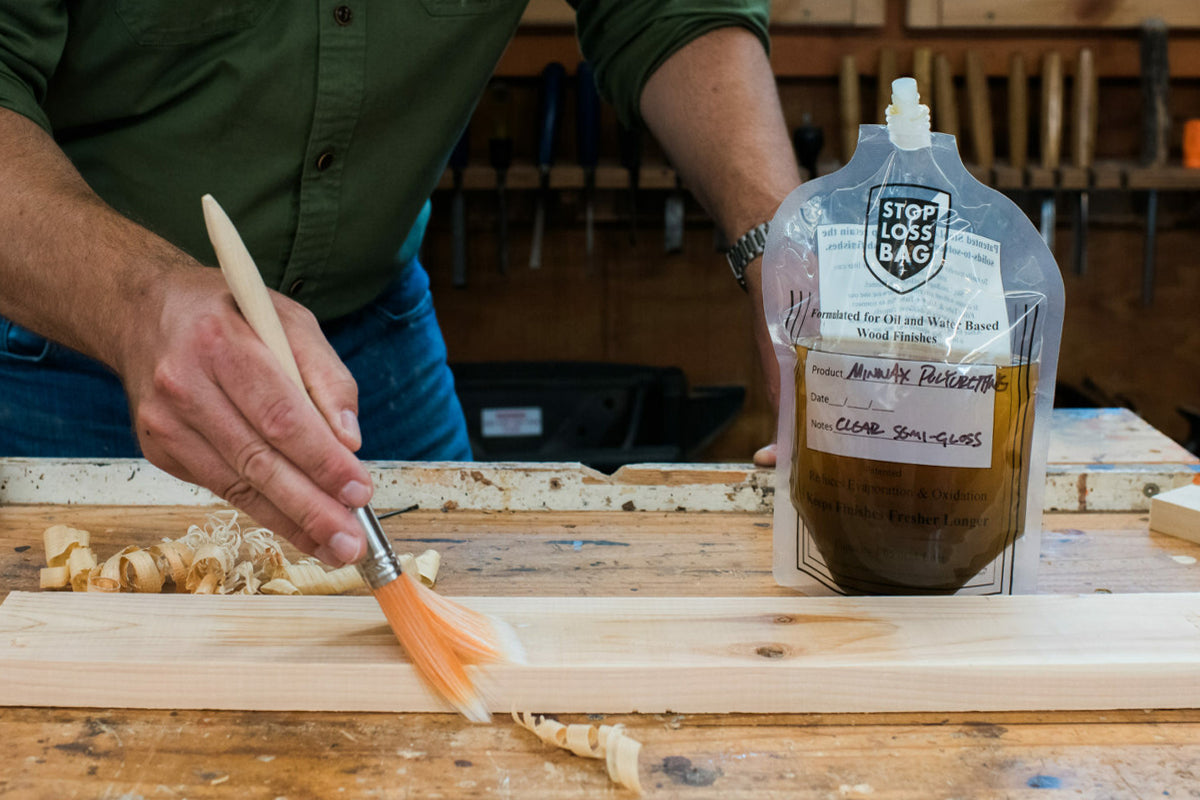Do you often open a tin of paint to find a solid block? Jonathan Salisbury looks at the clever StopLossBag system, sold by Wood Workers Workshop, that might make this a thing of the past.
The Woodworker & Good Woodworking
I can't remember how many times I've opened a tin of left-over paint stored in my garage to touch-up a damaged surface, only to find that the contents have solidified. Even if they haven't, little bits and pieces of debris and dried paint need filtering out. Varnish is the same. The design of tins needs to be improved...
Wood Workers Workshop sent me some StopLossBags to try out. Most items sent for testing appear in print a couple of months after they've been received, but this time I delayed my review just to ensure this product works as intended. Said to be suitable for storing most liquids, particularly oil- and water-based varieties, they were developed for paints, varnishes and adhesives. The 'bundle' contains four 1 litre bags, replacement tops and a funnel.
How they work
The patented StopLossBags pouches preserve the fresh-off-the-shelf quality with a 3-ply constructed material, which prevents solvent evaporation or air penetration. The cap is the obvious weak point, but the seal is effective at ensuring that no air gets in and no liquid gets out. To transfer the liquid from tin to pouch, you need the funnel, which sits on top of the pouring spout. This can be held in the separately available filler clip while the liquid is being transferred - and it needs to be clamped to a table when in use! However, it's not necessarily as easy as it sounds.
How to use
There are two possible methods. The first is to stretch the funnel over the top of almost any round tin up to 1 litre—the pouch's maximum capacity—blow air into the bag, then attach it to the funnel. Invert, holding on to everything at this point, as the funnel is too flexible to support the tin. Once the liquid has transferred, the funnel can be removed, air squeezed out, the cap tightened on the bag, and the bag stored for future use.
My blue paint came from a much bigger tin, so I used the more conventional method, which was to clip the bag into the MDF filler clip, attach the funnel and pour the contents a little at a time. The funnel just about supports itself in this method.
Issues
The clip-the-funnel-to-the-tin method was hopeless as I kept having to release the airlock that had formed. I had no choice with the blue paint and I'd recommend this method for all situations. The StopLoss website has a video with a funnel support, which would be worth making if you're intending to use this system regularly. It may also have occurred to you that when pouring paint into a funnel, not all of it is going to end up in the pouch. How can the funnel be cleaned up? Well, the silicone is not only flexible, but also non-stick. Once dry, the paint merely peels off. This job is harder if you try to scrape paint down into the bag as it's poured, although it's obviously more wasteful. And what about the bags? Well, these can be washed out with white spirits or water. I haven't tried that, but I'd be tempted to squeeze out as much as possible, then just decant a darker colour product, if possible. Sets of bags are also available, as are replacement caps and a filter, in case the finish has already started to dry out or become contaminated.
Conclusion
I deliberately left the pouches in the warmest place I could find for nearly three months, and so far the only issue is the inevitable separation of the pigment from the solvent. The liquid is as liquid as the day it went in. Comparing this to the thick lumps of solidified paint in the tin, I only wish I'd had the pouches a couple of years ago. Although not cheap, the StopLossBag system is worth having, especially if you're storing small quantities of expensive finishes over a long period of time. I've lost many times their value in paint, varnish and glue over the years, although I might have had to buy several bundles to store everything. Tins aren't always a clean and tidy way of keeping finishes, even if I try to keep them neat and tidy. Finding a solid lump in a tin is a nuisance, especially if I only want a small amount and have to go and buy more than required. Apart from needing to clean them once empty, and that I need lots of them for storing my finishes, and assuming that the design of tins isn't going to improve any time soon, these really do have the potential to reduce waste.
The Verdict
- Pros: Prevent waste; convenient size; reusable, suitable for most finishes.
- Cons: Can't be used with acetone, benzene, lacquer, lacquer thinner, methyl ethyl ketone (MEK), toluene, xylene, isobutanol alcohol, ethyl alcohol, and ethanol alcohol; limited to 1 litre.
- Performance Rating: 5 out of 5
- Value Rating: 4 out of 5

